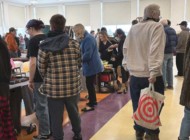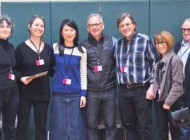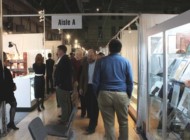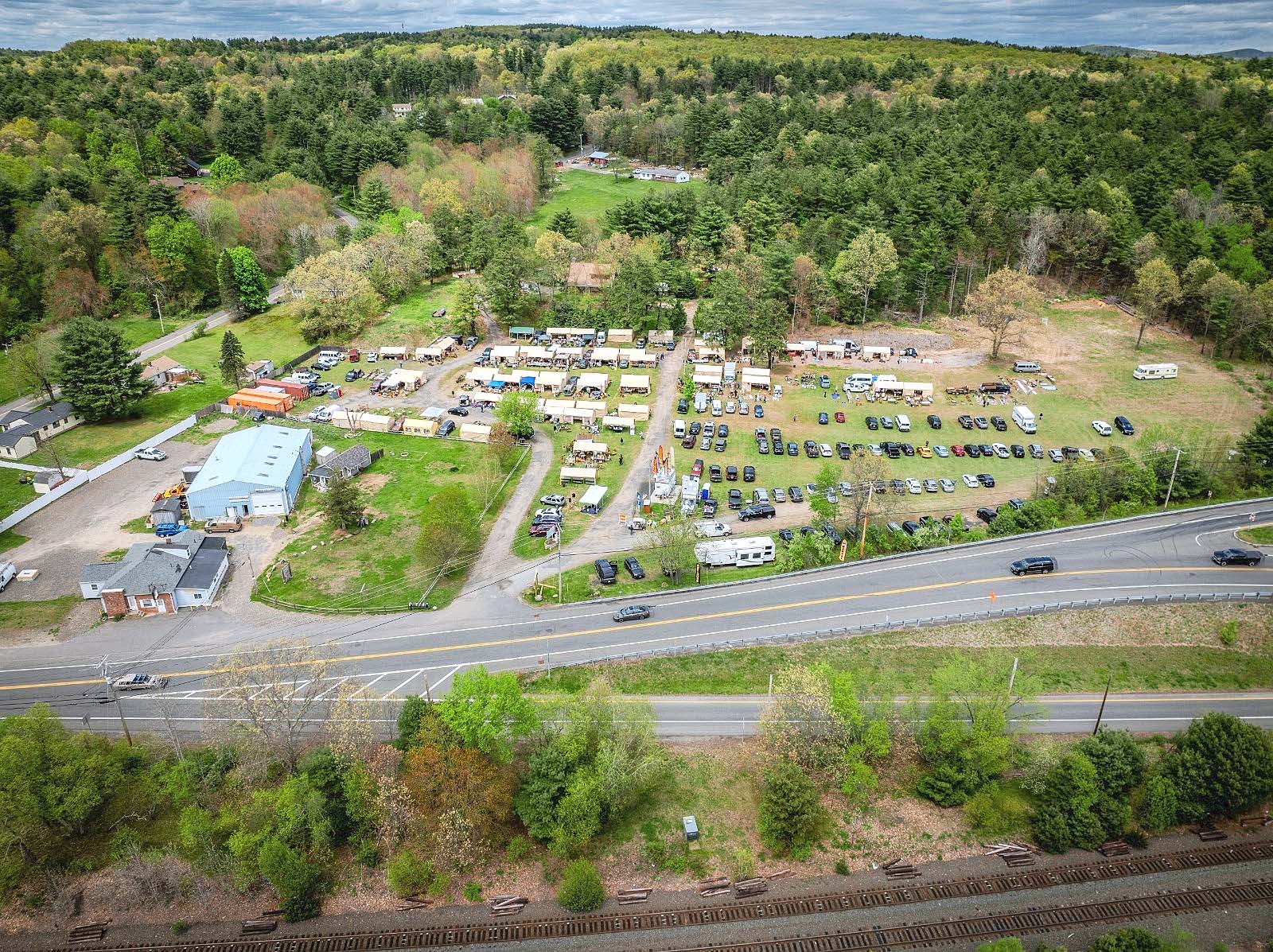
A bird’s-eye view of about 60 dealers set up Marier’s Antique Flea Market, courtesy of the owner.
Review & Photos by Z.G. Burnett
PALMER, MASS. — Marier’s Antique Flea Market opened Brimfield Week on May 9 through 13 with its 45th season. Sales were steady with many shining vendors reporting in the first few days, which slowed down only slightly for Mother’s Day on May 12. “Saturday was our best day,” reported Kris Dunn, who owns the market and the property with her husband, Jack. “It was nice and steady every day and we had beautiful weather. There were returning dealers and others new to the field, about 60 dealers in all. Some were showing for the first time at Marier’s after years in the Brimfield trenches.” Their reason for relocating? A less stressful retail experience on the dealer’s end, without losing sales.
Like Brimfield, Marier’s Market offers goods from every category and at every price point, and sometimes the most unexpected objects can surface. This was the case in the tent of Dean Warren of Found on the East Coast Antiques, Washington, DC, where a curiously carved wooden block was holding down a plastic bin’s lid. The block showed hand-painted numbering on the side, and turned out to be a stamp, one of many that were used to decorate wallpaper. These would be pieced together and colored with different inks to create multilayered, often repeating patterns on the paper. The particular block belonged to a design sold at the defunct retail chain Woodward & Lothrop. Locally known as “Woodie’s,” the company’s headquarters opened in Washington, DC, in 1887 and ceased operations in 1997.
Specialty dealers also showed, such as Leo Goudreau from Ware, Mass., who specializes in early American bottles and glass. Goudreau premiered at Marier’s Market after 35 years of setting up at Brimfield. “The show’s been good,” he said on Sunday. Although this category has not yet made a comeback among young collectors, it’s only a matter of time before someone with a keen eye spots the variety of glass and forms available. Goudreau had early to late Nineteenth Century figured flasks, a variety of delicate inks and snuffs, art glass from later makers, and expert reproductions that were made early enough that they’ve developed their own antiquity, if not vintage. Our favorites were a case gin and an open-mouthed storage jar in the same form, both in dark olive glass.
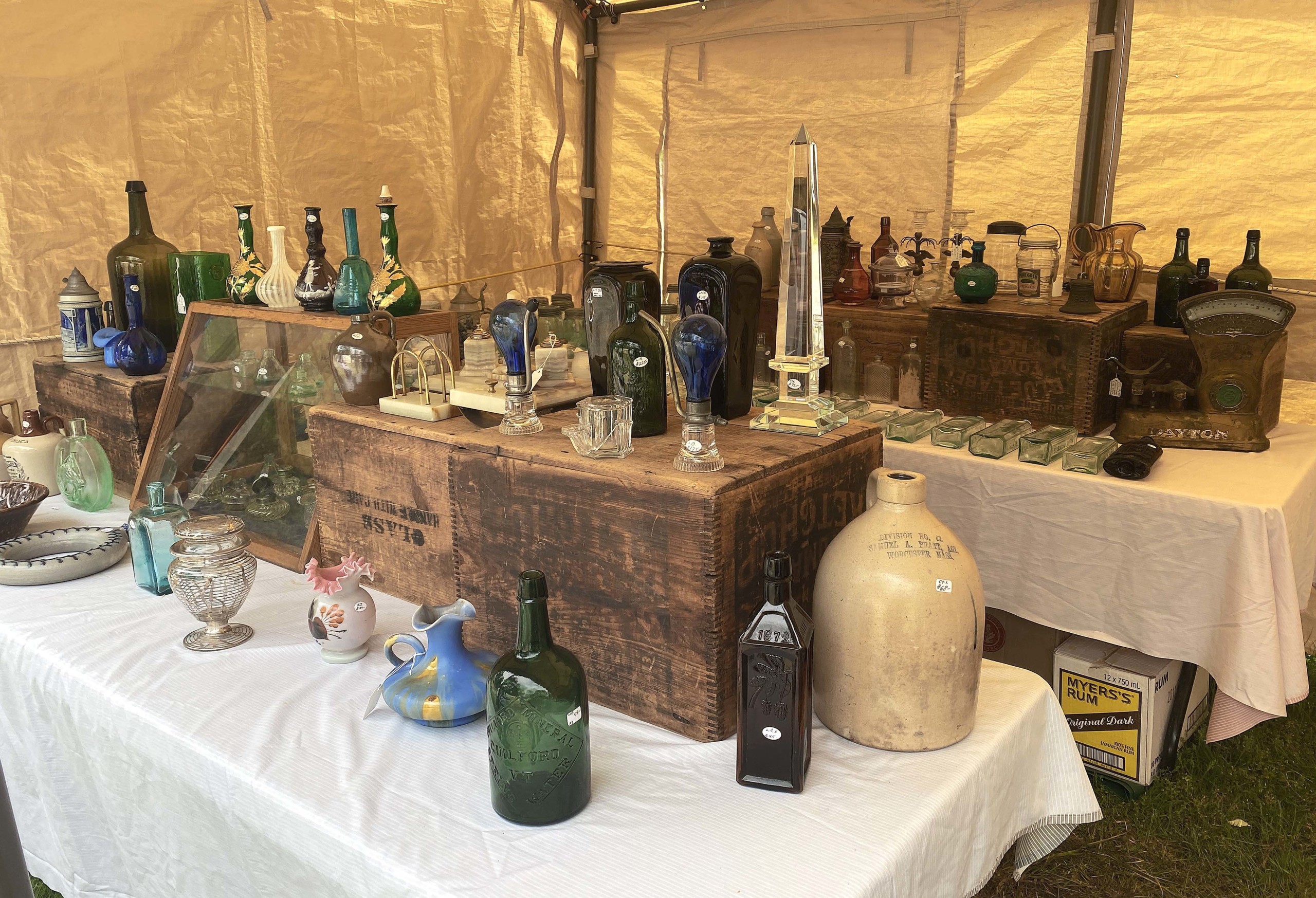
Leo Goudreau, Ware, Mass., carried the banner for early American bottles and glass.
Scott White brought an even more specific subcategory of glass; glowing in the black light hooked up in his tent were about 500 glowing pieces of uranium glass, with many more packed away for replenishment. It was an impressive display and White was quick to point out that it was completely safe to be near this glass, but not the best idea to eat off of it. “I use a Geiger counter on each of my pieces,” he explained. “The real culprit? Fiesta ware.” Each of these contain uranium as a colorant up to a certain manufacturing date, and both have a certain level of radioactivity. An easy way to determine if any pieces in your collection contain uranium is to shine an ultraviolet light on them. The glow that results from a positive reading is what first captured White, as his usual concentration is nautical antiques.
Stoneware was readily spotted throughout the market, but one jug drew particular attention from passers-by. A Delaware dealer presented a 2-gallon jug from Fort Edward, N.Y., that appeared to be both redware and slipware, but in an unusual form for the area. Haxstun, Ottman & Co. was in operation from 1867 to 1872, then became Ottman Brothers when co-owner Andrew Haxstun started his own business in 1875, Haxstun & Co., which produced this jug. Cobalt decorated crocks from Haxstun & Co. and its predecessor are more common, and New York red slipware of this kind is scarce.
Any vintage clothing collectors scouring the fields during Brimfield week would do well to add Marier’s to their circuit. Unique Fabrique, Belchertown, Mass., was one of a few booths devoted to fashion. Racks lined the tent’s entrance, laden with dresses, accessories and a couple of reasonably priced alligator purses, and inside was a closet so diverse it was difficult to focus on one object. Some dealers were less organized, bringing piles of fabric for the more adventurous to pick through, and others brought more contemporary, gently used secondhand clothes.
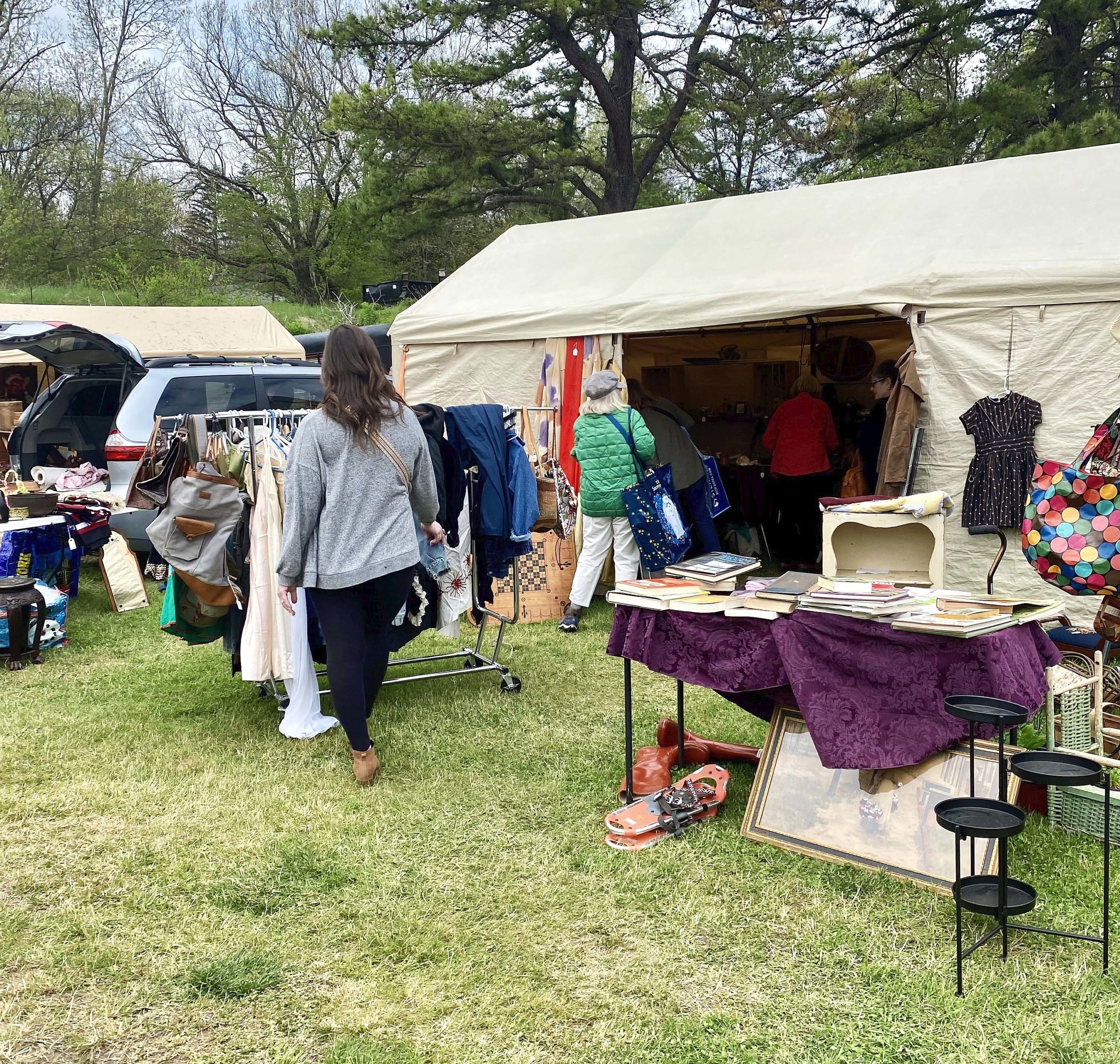
Vintage clothing dealers, take note! Unique Fabrique, Belchertown, Mass., was one of many vendors that brought antique textiles, rare purses, children’s clothing and more fabric goods.
South Brimfield, Mass., local Daniel Vandalay is another niche collector and dealer that specializes in Hawaiian or “aloha” shirts, which he calls “an amalgamation of Hawaiian, Japanese, Polynesian, Filipino, American and other cultures.” Some of the earliest aloha shirts were dated to the 1920s or 1930s, and Vandalay’s rarest examples in his booth were manufactured in the 1940s. Their materials varied from silk crepe de chine to polyester, all in bold patterned colors that were a true feast for the eyes. Aloha shirts gained popularity in the United States with the rising popularity of “casual Fridays,” but some fabrics were considered even too bright for a more relaxed dress code. Shirtmakers responded by facing the wrong side out, prioritizing the fabric’s muted tones and allowing for a pop of color with cuffed short sleeves. The craftsmanship in each piece was distinct; labels indicated long lost cottage industries and bad stitching betrayed a well-intentioned homemade attempt. Vandalay lived in various Asian countries over nearly two decades and is currently writing a book about aloha shirts.
Fine and folk art was also available at Marier’s, with other works defying that binary. One such unsigned ink sketch appeared to be done in the style of Al Hirschfeld (1903-2003) and was unfinished and mounted in an earlier wood frame. Offered by a Lanesboro, Mass., dealer who kindly turned the picture around, the sketch was credited to Antoine Gerard Theodore “Toon” Hermans (1916-2000), a Dutch triple-threat comedian, singer and writer that often performed in one-man shows. It’s unclear whether the sketch was a self-portrait or one of Hermans’ stage characters, and his other surviving paintings are far more post-impressionistic than cartoonish.
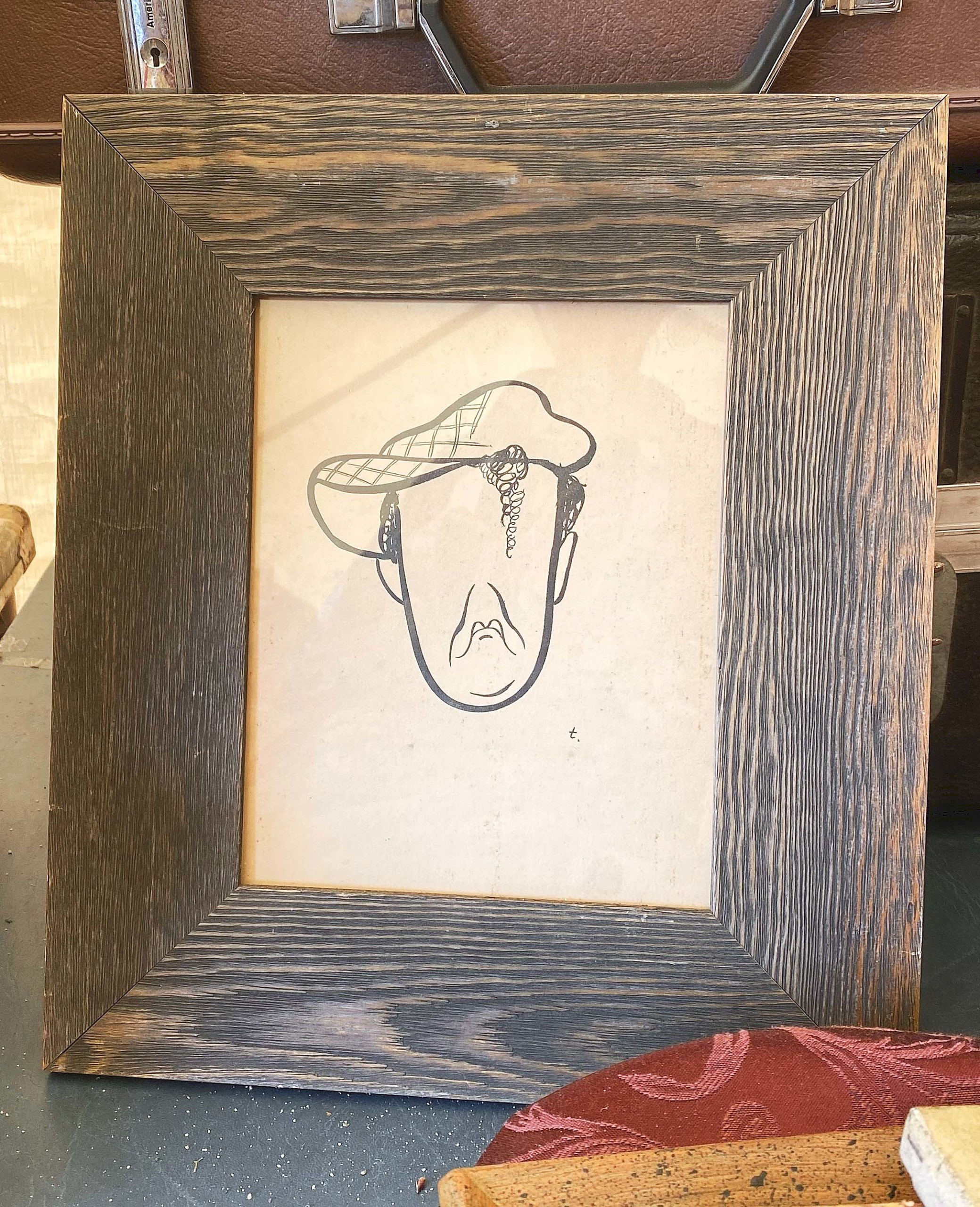
Antoine Gerard Theodore “Toon” Hermans (1916-2000) was a Dutch comedian, singer and writer, but not many know he was also an artist. This Hirschfeld-esque ink sketch was presented by a Lanesboro, Mass., dealer who bought it from a picker that scored deals in Paris and Amsterdam markets for decades.
Despite its years of operation, Marier’s Antique Flea market is still the hidden gem of Brimfield Week known mostly to local dealers and collectors; now that the secret is out, out-of-town devotees should build in more time to visit the farther field on July 4 through July 8. Marier’s also hosts Sunday markets every other week this season, beginning in June.
Marier’s Antique Flea Market is at 1628 Park Street. For information, 978-761-8136 or its Facebook page, Mariers-Palmer Antique Flea Market.

















